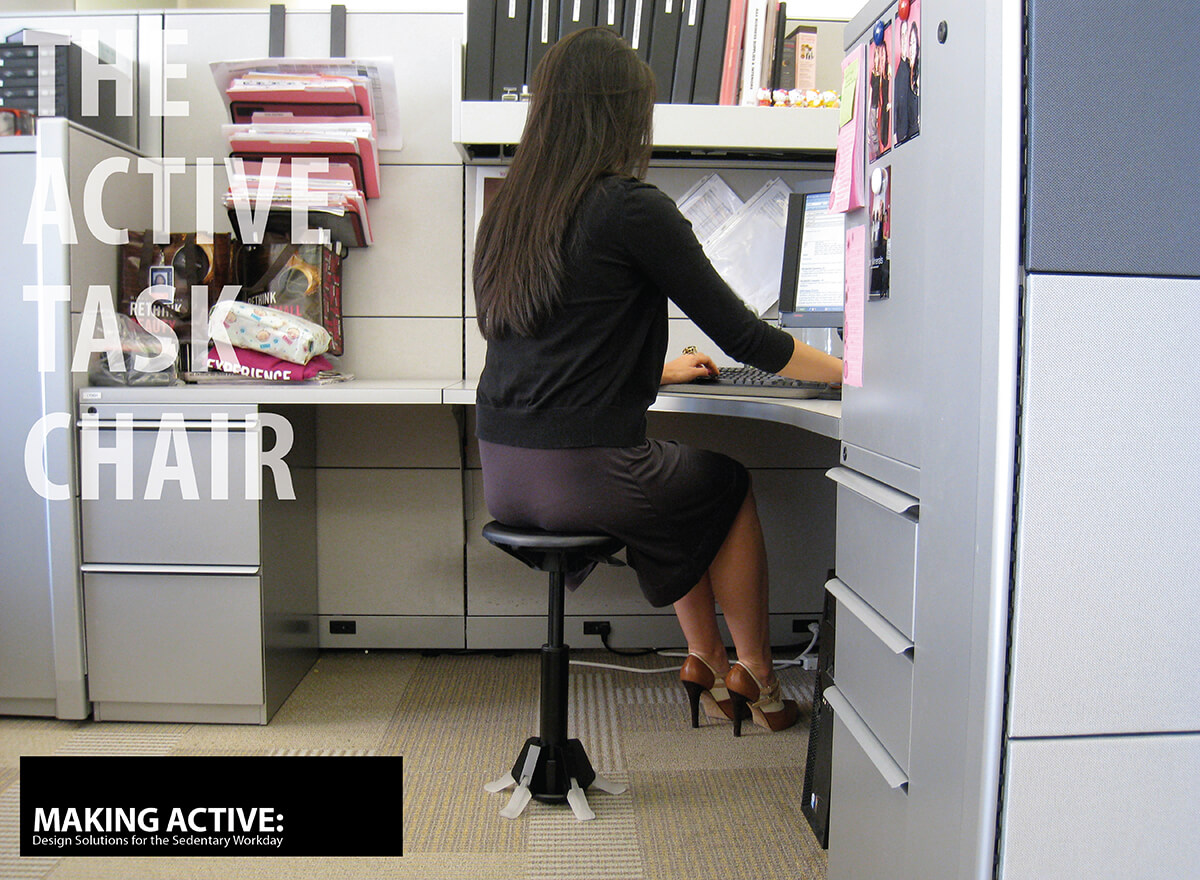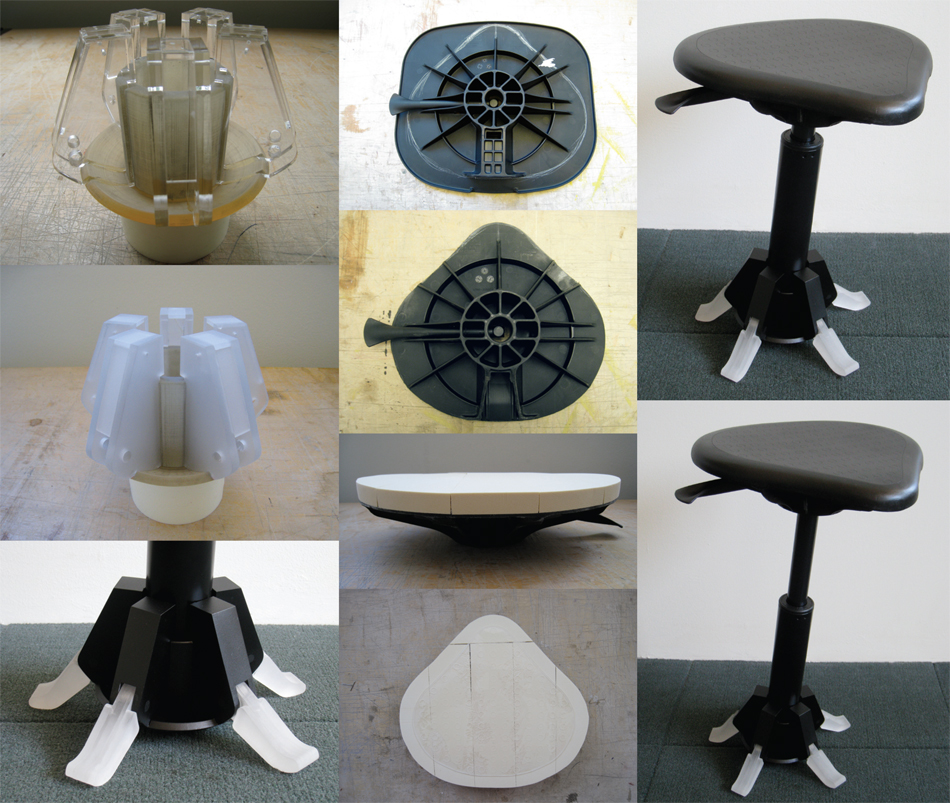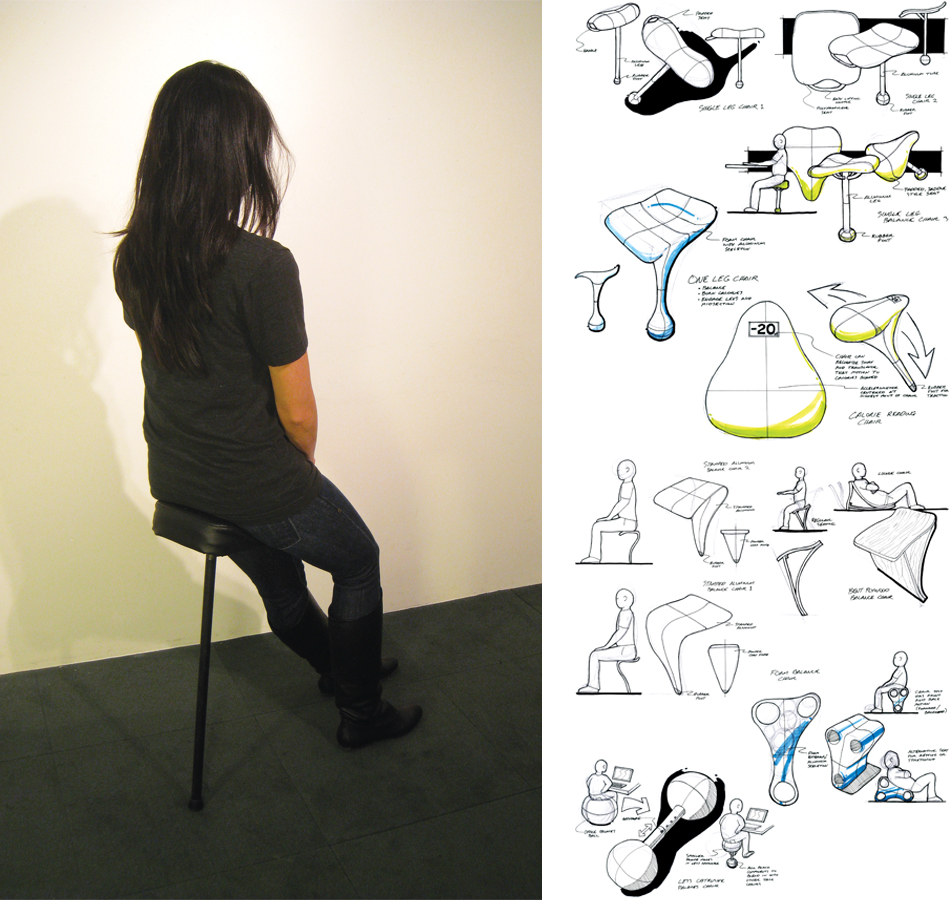Active Task Chair
The majority of my work during grad school focused on the idea of constantly burning calories throughout the day. The Active Task Chair is intended to provide instability for continuous muscle engagement while still being convenient and acceptable for office use. Prototyping and user testing revealed that the chair had to be easily moved but its location must remain the same for the users desired position while seated. That also meant that it needed the instability yet be able to stand on its own when not in use. Height adjustment was also a necessity.
The Single-Leg Balance Chair
When I first made a prototype consisting basically of a small seat mounted on a steel pipe, I didn’t think much of it. To me it was just a quick explorations. As I showed it to different groups of people, an eagerness to sit on it surfaced. Despite the chairs height, people felt it was generally comfortable. As people spun in circles and rocked back and forth I began to take notice of how potentially impactful it could be.
Next Prototypes and User Testing
In order to test how the single-leg balance chair would fair in the real world, one issue had to be addressed right away: adjustability.
“I was jumping up and down too much, so I switched to my chair.” – Jennifer Cardoza
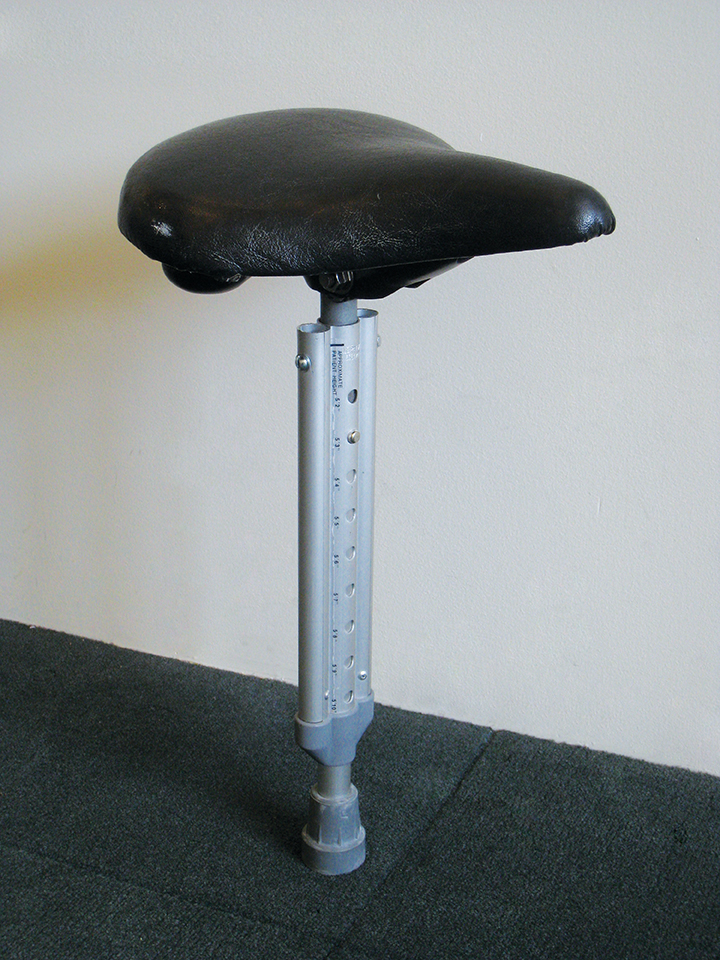
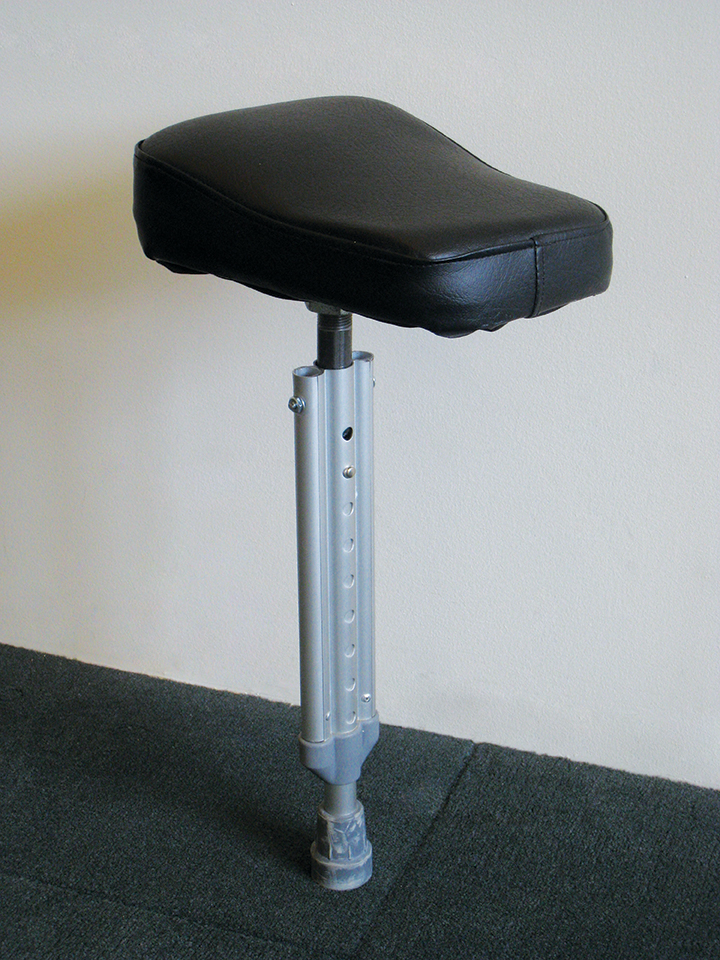
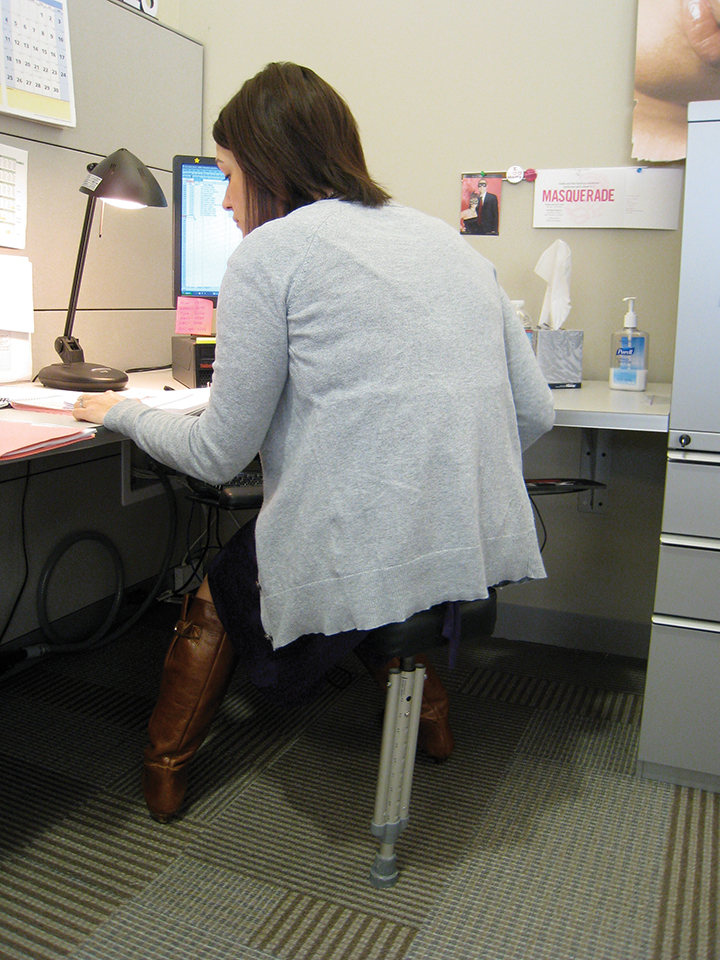
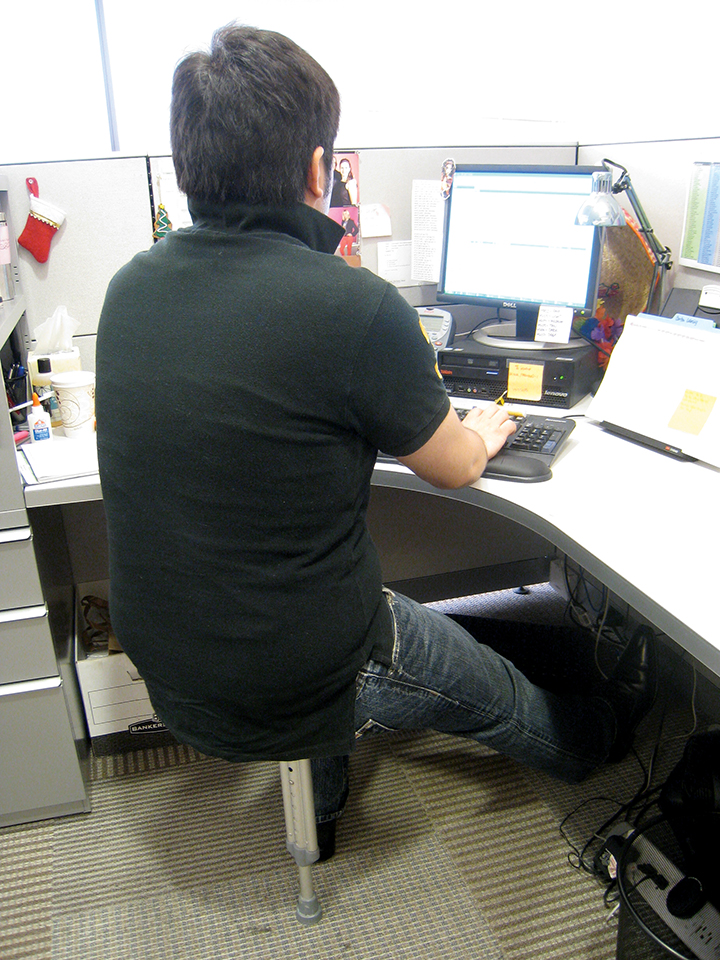
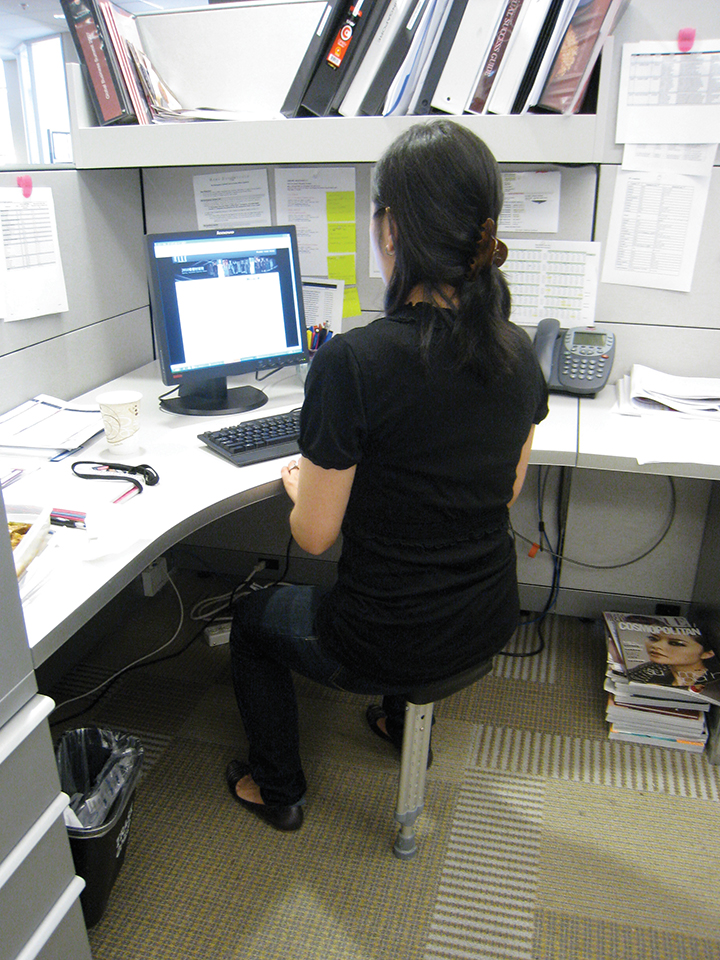
Fully Functioning Prototype
From my user testing session, the feedback was that the chair needed to remain in the same place after standing.
For adjustability, I added the seat and pneumatic cylinder from a cheap IKEA chair. For the base, I used a 10 inch PVC pipe cap. I 3D printed a receptacle for the cylinder and laser cut the five spring-loaded outriggers. In the end, a user could swivel and adjust the height of the chair and trust that is would remain in the same place once they stood up and walked away.
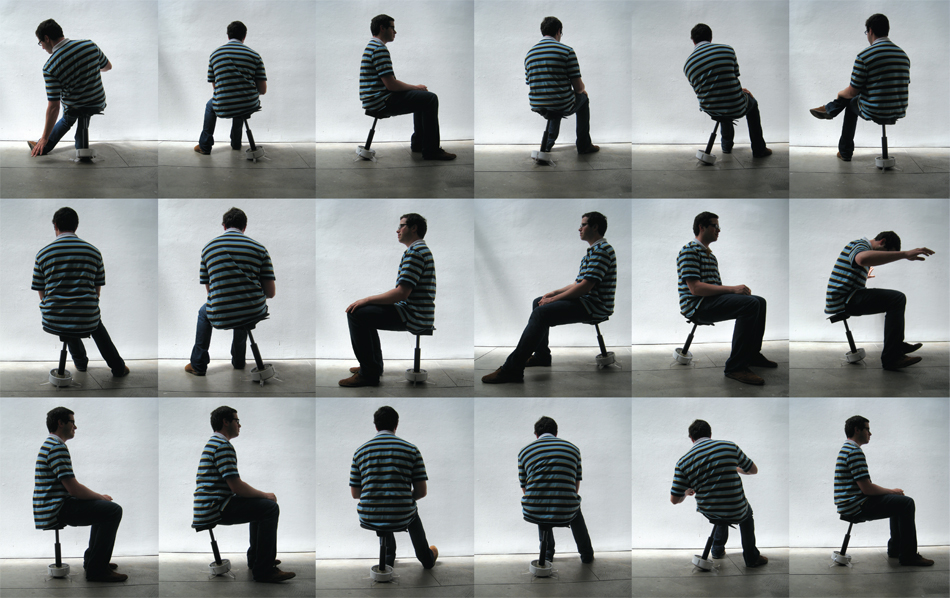
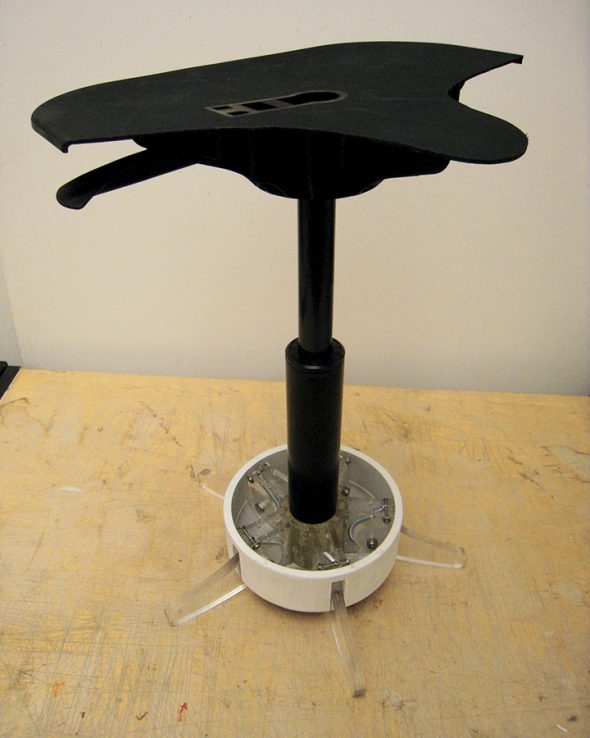
High Fidelity Functional Model
Once I was happy with the fully functional prototype, I stylized the high fidelity functional model to be more acceptable for an office environment.
